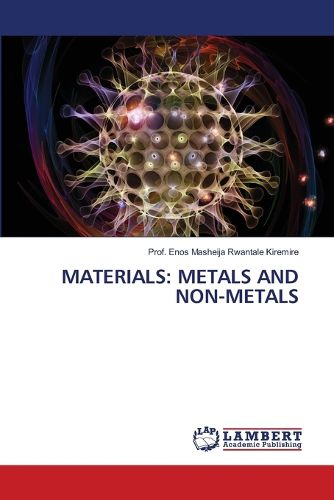Readings Newsletter
Become a Readings Member to make your shopping experience even easier.
Sign in or sign up for free!
You’re not far away from qualifying for FREE standard shipping within Australia
You’ve qualified for FREE standard shipping within Australia
The cart is loading…






Metals and non-metals have been fundamental to human advancement, influencing industrial revolutions and modern technologies such as artificial intelligence, high-speed computing, and space exploration. These materials can be categorized into chemical elements, molecules, compounds, and clusters, which are essential for understanding the order of matter in the universe. Chemical cluster theory elucidates this order among chemical elements and their electrons, positing that all chemical clusters adhere to a natural law expressed by the equation K?=DzCy, where Dz and Cy vary according to specific elemental series: for transition elements, Dz follows the 14n series and Cy the 12n series; for main group elements, they are 4n and 2n respectively; and for lanthanides and actinides, they follow the 28n and 26n series. The variables z and y represent skeletal elements in their respective cluster shells, with their sum equaling the total number of skeletal elements. Notably, metallic elements have a negative Dz parameter, while non-metallic elements have a positive one.
$9.00 standard shipping within Australia
FREE standard shipping within Australia for orders over $100.00
Express & International shipping calculated at checkout
Metals and non-metals have been fundamental to human advancement, influencing industrial revolutions and modern technologies such as artificial intelligence, high-speed computing, and space exploration. These materials can be categorized into chemical elements, molecules, compounds, and clusters, which are essential for understanding the order of matter in the universe. Chemical cluster theory elucidates this order among chemical elements and their electrons, positing that all chemical clusters adhere to a natural law expressed by the equation K?=DzCy, where Dz and Cy vary according to specific elemental series: for transition elements, Dz follows the 14n series and Cy the 12n series; for main group elements, they are 4n and 2n respectively; and for lanthanides and actinides, they follow the 28n and 26n series. The variables z and y represent skeletal elements in their respective cluster shells, with their sum equaling the total number of skeletal elements. Notably, metallic elements have a negative Dz parameter, while non-metallic elements have a positive one.